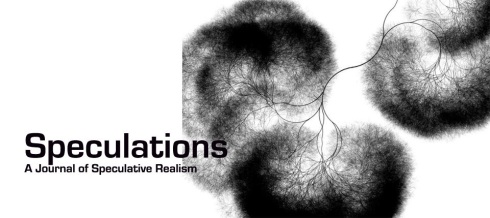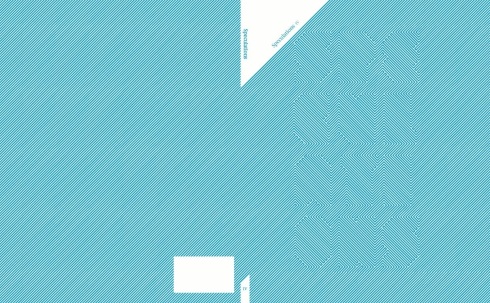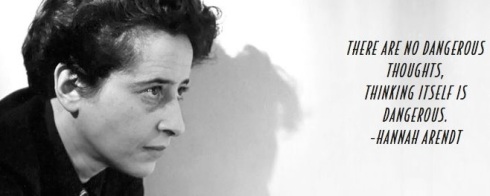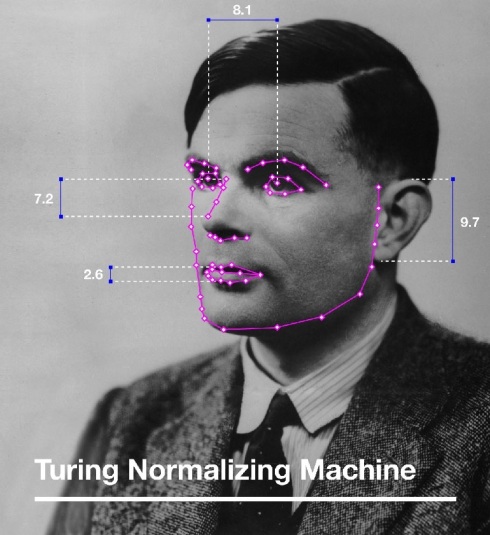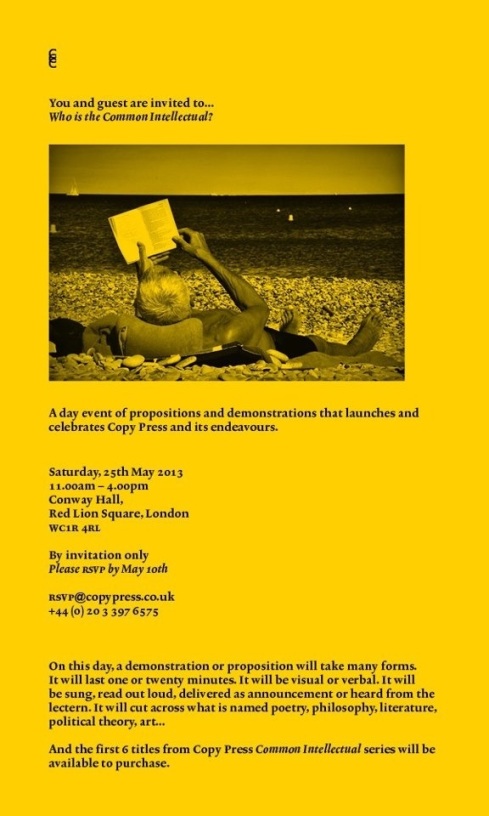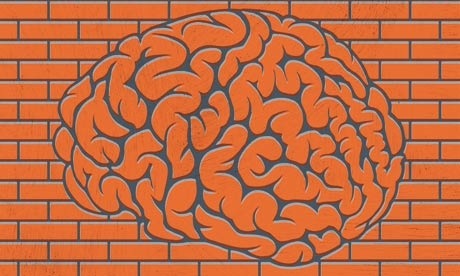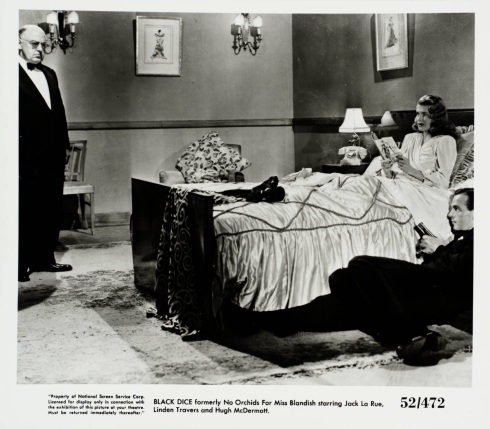It is appearing here…
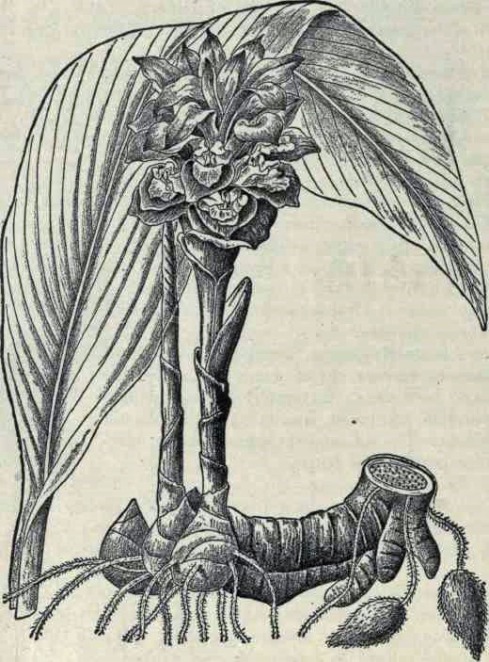
Turmeric Rhizome and Stem
“Supervision is a complex business and to begin to define good practice, for example in monitoring it, without a careful exposition of just what it involves, its constraints and the parameters of its responsibilities is, in our view, unlikely to lead to an enhancement of quality provision. To encourage review teams to identify what, in their collective opinion, are examples of good practice without any reference to any evidence whatsoever other than their own, predetermined, beliefs is to run the risk of the inappropriate adoption of dubious practices by institutions intent on illustrating their commitment to the newly established, yet ever changing, quality agenda.” [Powell and Green: 40-41]
http://www.postgraduatedirections.org.uk/QualityMattersInDoctoralSupervision.pdf
Rough Draft]
6 month scoping project: literature review on practice-based PhD supervision
Dr Mark Ingham [1]
Contents
Introductions/Backgrounds
Foregrounds/Taxonomies
Geographies/Spaces
Themes/Openings:
- What’s the Difference between Practice-Based PhD Supervision and other types?
- Digital/On-line Supervision/Supervisors [Digital Spaces for Supervision]
- International Research Supervisors Group [Web/Blog Site]
- Student Forum
Beginnings/Endings
References/Links
Introductions/Background
Following on from discussions held at the University of the Arts, London supervisor’s forum held on the 4 June 2008, and Border Conflicts on the 21 May 2009 which was co-hosted between The Centre for Learning and Teaching in Art and Design [CLTAD] and the International Centre for Fine Art Research (ICFAR), both centres prepared to foreground a future UAL research project in the emerging field of supervision of PhD students engaged in practice-based knowledge and enquiry.
The 6 months scoping project was to engage in research examining and reporting on current national and international developments and thinking in this field. I was asked to set up a Blog to record and disseminate this research, which in itself has become a useful tool in the investigation. It can be found and engaged with at: https://ualscopingphd.wordpress.com/
Foregrounds/Taxonomies
It soon became clear that research into art and design ‘practice-based’ and ‘practice-led’ PhD was fairly extensive with a few key players leading the inquiry. Within in this research there were some examples of papers and books [Newbury 1997, Scrivener 2000, Lebow 2008] that particularly addressed the issue of the supervision of practice-based PhDs. It also became apparent that there seemed to be much more research into the role of supervision was being carried out in other areas of PhD study [Lee 2007, 2009, Taylor 2008, Green and Powell 2008? Delany 2009, Kiley 2010].
A good example of this current research has been conducted by Dr Anne Lee, the Academic Development Adviser University of Surrey. In her paper: Developing effective supervisors: Concepts of research supervision she writes, ‘… the range and depth of concepts that a supervisor holds will dictate how they supervise and the type of researcher who emerges at the end of the process. In an age of supercomplexity, when demands of academic and other employers are unpredictable, the skills of the effective researcher, and thus their supervisor, are likely to become even more important.’ [Lee 2007:1]. This in-depth study along with others form the UK and abroad should act as good starting points for further investigation into whether there are particular factors that need to be addressed in the supervision of art and design practice-based PhDs.
Geographies/Spaces
Practice-based research degrees in art and design are being carried out in many UK, European and Australian institutions and seem to be about to burgeon in the USA.
Peter Hill[2] writes in his July 2010 THE article, ‘Australia led the way in studio-based PhDs; the UK followed a few years later. And now the US is eyeing the water nervously.’ [Hill 2010] This is widespread acceptance of the PhD in the Creative arts as a ‘final’ degree is emphasised in the Australian Council of University Art and Design Schools Future-Proofing the Creative Arts in Higher Education [Final Report 2009] which stated that, ‘The PhD in the creative arts is now the accepted terminal degree in Australia, as it is in a number of other countries such as Britain, Finland, New Zealand and Japan, along with the professional Doctorate of Creative Arts (DCA). ‘[Baker 2009:1]
Beginnings
There are many ‘beginnings’ to how practice-based art and design PhDs have been thought about and written about over the last 30 years. Some of these beginnings have created new spaces from which more thought has been possible. This section is not in any particular order as the thinking is continuous. The dates have been chosen as these seem to mark moments of acceleration in thinking.
2003 – 2006
In 2006 the project report re:search – in and through the arts [2003-2005][3] was published by the European League of Institutes of the Arts [ELIA]. In their opening forward the authors[4] write, ‘ This Project Report rounds off two years of researching, documenting and discussing the various ways in which Higher Arts Education Institutes and artists/ researchers invent, apply, teach and supervise methods of inquiry.’ [Langkilde and Regouin 2006].
The report commented on the need for further development of PhD practice-based supervision by stating,
A follow-up investigation into supervision criteria, requirements for supervisors, development of supervisory teams and research training is critical for the development of research and research degrees and will facilitate international mobility of researchers and of supervisors. Practical proposals included a training course for supervisors and the collation of a list of potential supervisors and external examiners. [Ibid: 14]
This followed the observation on the then current state of supervisory arrangements,
One-to-one supervision is still the norm, although it moves away from a merely theoretical approach common in art history. Contact and direction between supervisor and the doctoral candidate range from one supervisor to a team of supervisors and from intensive to hardly existent. Most supervisors are professional artists employed by the institution. In some countries external reviewers (or examiners) are involved. The status of professors at Higher Arts Education Institutes varies according to national and institutional traditions, possibly hampering the mobility of research and supervisory staff. [Ibid: 12]
1997
UK Council for Graduate Education
PRACTICE-BASED DOCTORATES IN THE CREATIVE AND PERFORMING ARTS AND DESIGN
5.5 Supervisors
All institutions have similar general regulations covering the arrangements for the supervision of PhDs. These general regulations specify the number of supervisors to be appointed, and that those appointed should be suitably qualified and experienced. They may specify the number of successful previous supervisions the supervisor must have undertaken, and the number of supervisions a candidate may expect as a minimum. However, within these general regulations there is no specific reference made to the supervision of students carrying out practice-based work. This is not to say that such advice may not exist in the form of guidelines within individual departments. If institutions are to adopt the inclusive model outlined in this paper it may be timely for them to consider their current regulations and formal guidelines in this area to ensure that students in the field of creative arts are supported in their work and to ensure that the student’s project is such as to enable it to conform to more traditional research requirements, if the revised regulations so require. It will often be necessary for institutions to appoint two supervisors to cover both the academic and practical aspects, in line with the advice on external examiners below.
Frayling, C. et al (1997). (eds.) Practice- based Doctorates in the Creative and Performing Arts
and Design. N.p. [UK]: UK Council for Graduate Education.
http://www.ukcge.ac.uk/OneStopCMS/Core/CrawlerResourceServer.aspx?resource=CD25644D-0D5A-41DA-8CC4-EEFADA55DB31&mode=link&guid=a57997aa5a9f4450bb141144a86634e6
2004
The practical implications of applying a theory of practice based research: a case study.
At the launch of the AHRB’s framework for doctoral training provision on March 12th 2004, Michael Jubb, in response to a question from the floor, observed that practice based research is “contested territory”. Notwithstanding the fact that scholars and practitioners agree on many points, such as the centrality of artefacts, e.g., paintings, videos, installations, etc., the existence of contested territory means that the doing of practice based research is accompanied by a significant component of methodological development: frameworks and methods are created and tested through the doing of practice based research.
This puts the practice based visual arts and design doctoral student and supervisor in an unusual, if not historically unique position of having to consider both methodology and methodological rigour. This situation, which is a source of inspiration and anxiety for both supervisor and student, requires a level of critical engagement with the debate on the theory and practice of research not demanded of researchers in those disciplines where shared and agreed research principles and methods have become embedded.
Scrivener, S. (2004) The practical implications of applying a theory of practice based research: a case study. Working Papers in Art and Design 3
Retrieved 21.07.2010 from URL http://sitem.herts.ac.uk/artdes_research/papers/wpades/vol3/ssfull.html
ISSN 1466-4917
The Missing Links By John Wakeford
Too many postgraduate students suffer from inadequate support and end up failing. John Wakeford has investigated a number of complaints about shoddy supervision. Here he details some of the worst cases.
Postgraduate prospectuses imply that research students will be supervised by leading scholars who hold frequent and regular supervisions, are accessible at other reasonable times, and provide direction and monitoring of students’ work, thus ensuring that students obtain a PhD in three or four years.
The reality is often different. Many students find their original supervisors too busy, or unavailable because of study leave, promotion, illness, personal problems or retirement.
http://www.guardian.co.uk/education/2004/mar/16/postgraduate.highereducation
2005
re:search – in and through the arts 1 November 2003 – 31 October 2005
http://ec.europa.eu/education/transversal-programme/doc/studies/2003research_en.pdf
TOWARDS A RESEARCH PROFILE FOR HIGHER ARTS EDUCATION IN EUROPE
R e s e a r c h S u p e r v i s i o n
One-to-one supervision is still the norm, although it moves away from a merely theoretical approach common in art history. Contact and direction between supervisor and the doctoral candidate range from one supervisor to a team of supervisors and from intensive to hardly existent. Most supervisors are professional artists employed by the institution. In some countries external reviewers (or examiners) are involved. The status of professors at Higher Arts Education Institutes varies according to national and institutional traditions, possibly hampering the mobility of research and supervisory staff. [p12]
I n t e r n a t i o n a l P l a t f o r m s o f s u p e r v i s o r s , r e s e a r c h e r s
Specialised cross-national networks driven by artists, designers, researchers, students, supervisors, theorists should create platforms for collaboration, training, and reflection. [p14]
F o l l o w – u p i n v e s t i g a t i o n i n t o s u p e r v i s i o n
A follow-up investigation into supervision criteria, requirements for supervisors, development of supervisory teams and research training is critical for the development of research and research degrees and will facilitate international mobility of researchers and of supervisors. Practical proposals included a training course for supervisors and the collation of a list of potential supervisors and external examiners. [p14]
Supervision , r e s e a r c h t r a i n i n g a n d d e v e l o p i n g w a y s o f o r g a n i s i n g r e s e a r c h
Supervision is increasingly considered crucial for the quality of research and for the development of the research profile of the institution. Models include one supervisor, in some countries two or even three supervisors per candidate. Contacts between supervisor and the doctoral candidate range from informal interaction with one supervisor to intensive exchange with a supervisory team. Supervisors are chosen on the basis of academic and/or artistic merit. Most supervisors are professional artists employed by the institution while in some countries external reviewers or examiners are involved.
The academic status of professors at art schools and the scientific standards applied in evaluating research outcomes in the arts, reflect different cultural, national and institutional traditions. In Germany and Poland a ‘habilitation’ degree is the required academic status for qualified supervisors. All countries surveyed adopt a formal process for recruiting PhD staff and for the formulation of special research supervision standards.
Further investigation into the requirements for supervisors in the light of the growing mobility of (research) staff and (PhD) students would be useful for the promotion of international collaboration and international programmes. [p34]
PROJECT REPORT AND COMPARATIVE OVERVIEW
European League of Institutes of the Arts / Universität der Künste Berlin With the support of the Directorate-General for Education and Culture, European Commission
http://www.elia-artschools.org/_downloads/publications/research_overview.pdf
Supervision and Research Training
The Comparative Overview suggests that in spite of the many different degree titles, assessment processes may be far more comparable. In the Comparative Overview as well as in the Final Project Conference, supervision was identified as critical for the development of research and research degrees. Transparency in the qualifications of supervisors would also facilitate international mobility of researchers and of supervisors. The Comparative Overview proposes a follow-up investigation into supervision criteria, requirements for supervisors, developments towards supervisory teams and research training. Training of supervisors is often mentioned as a problem and this is echoed by the Expert Group’s recommendation that a training course for supervisors in arts research should be organised. [p9]
2008
A REVIEW OF THE LITERATURE ON EFFECTIVE PhD SUPERVISION
David Delany PhD, CAPSL
http://www.tcd.ie/CAPSL/academic_practice/worddocs/Effective_Supervision_Literature_Review.doc.
A review of the international literature on doctoral supervision covering the history of the PhD, factors affecting PhD completion, and an overview of several models of the supervisor-supervisee relationship.
MODELS OF SUPERVISION
Pearson and Kayrooz (2005) argue that the development of academic supervisors has been constrained by a “lack of robust conceptual understanding of what supervision involves”. In attempting to answer this challenge and capture the multi-faceted nature of effective supervision researchers have used a number of different approaches which vary in sophistication from uni-dimensional metaphors, to unstructured lists of desirable traits, to complex multi-dimensional empirically-driven frameworks. Grant (1999) suggests that the majority of these approaches to understanding and practicing supervision emerge from a liberal humanist view of social relations in which supervision is understood to be an essentially rational and transparent engagement between autonomous individuals. She argues that additional useful insights into the subtleties and complexities of supervision can be gained from considering supervision within a broader psychoanalytic context. [p5-6]
And
Following Cullen et al. (1994), Pearson and Brew (2002) suggest that a more productive approach is to focus on what supervisors are actually doing and why. This is done on the assumption that this grounds discussion in the practice of supervision and the behaviour of participants, ensuring that their learning is situated in their particular research contexts. [P13]
Although the international research literature on postgraduate supervision is replete with examples of what constitutes good supervision practice (Moses, 1985; Zuber-Skerritt, 1992; Christie and Adawi, 2006; Holbrook and Johnston, 1999; Johnson et al., 2000), there is a dearth of longitudinal research that actually assesses the impact of interventions designed to improve postgraduate supervision. [P13]
CONCLUSION
The increasing international importance of innovation and knowledge generation has driven an increase in the research literature on research supervision. However, although a rich array of supervisory models have been proposed to account for the multifarious factors that are associated with effective supervision there is still a salient need for a program of coherent empirical validation. [P13]
Quality Matters in Doctoral Supervision – a critique of current issues in the UK within a worldwide context
Stuart D Powell and Howard Green
Full text at:
http://www.postgraduatedirections.org.uk/QualityMattersInDoctoralSupervision.pdf
3. Conclusions
We have noted above the example of the ‘habilitation’ in France and have suggested thatit is concerned more with the research projects than with the pedagogic issues of supervision. We have also noted that the training of supervisors is now a feature of the postgraduate research scene in many countries.
In the light of these two notes, it seems to us important to consider just what it is that supervisors are being trained for, and again, this brings us full-circle to questions about the nature of the doctoral award to which the student aspires. As we have stressed elsewhere (Powell and Green, 2007), our view is that the student is engaged in acts of learning about how to do research, is studying for an academic award that has criteria which the student needs to demonstrate that he/she has met. Supervision is, therefore, primarily an act of pedagogy – not of research. Hence it follows that research degree supervision should be about how the supervisor can most effectively engage with the learner in the latter’s attempts to provide evidence to meet the criteria for the award.
In one sense it might seem that the art and the science of teaching should readily transfer to the research degree context from the other kinds of [university] teaching that the academic member of staff is engaged in. However, what makes research degree supervision different is the expectation that the student will attain a kind of mastery that is on a par with the supervisors’ and that in respect of the specifics of knowledge the student will necessarily exceed that supervisor. After all, the student has to contribute to knowledge and this means that supervisors must learn things they did not know before.
The ‘curriculum’ in research degree study is therefore about extending knowledge not merely transferring it. The essentials of the teacher/pupil (or master/novice) relationship are different from that which pertains at all other levels of learning and therefore the pedagogy is new. Supervisors who think they can supervise because they can research are necessarily misguided and it follows that systems which mirror this misguided notion are also necessarily at fault. Prior experiences of researching and/or teaching are necessary but not sufficient for effective research degree supervision.
Supervision is a complex business and to begin to define good practice, for example in monitoring it, without a careful exposition of just what it involves, its constraints and the parameters of its responsibilities is, in our view, unlikely to lead to an enhancement of quality provision. To encourage review teams to identify what, in their collective opinion, are examples of good practice without any reference to any evidence whatsoever other than their own, predetermined, beliefs is to run the risk of the inappropriate adoption of dubious practices by institutions intent on illustrating their commitment to the newly established, yet ever changing, quality agenda. [Powell and Green: 40-41]
[1] In 2000 I started a full-time AHRB funded practice based PhD at Goldsmiths College. This was completed in 2005 and I have continued to practice and be involved in practice-based research ever since. This phase of practice and research culminated in an Arts Council for England funded exhibition at Dilston Grove, Cafe Gallery Projects in 2008. As an artist I have been excited by the dynamic relationships between research, theory and practice and how these relationships can be mutually beneficial to my own and others work. As a supervisor of practice-based PhDs I have taken a keen interest in the continuing and often contradictory developments in the way they are thought about in the educational institutions I have worked in over the last 10 years. The paradoxes and fluidity of the various manifestations of practice-based and practice-led research has both intrigued and frustrated me in equal measure.
[2] Peter Hill is an artist and writer and adjunct professor at the Royal Melbourne Institute of Technology University, Melbourne.
[3] The report states that, ‘Supported by the European Commission, ELIA and the Universität der Künste Berlin undertook the re:search in and through the arts project in 2004-2005 with the aims of mapping the diversity of approaches to research and research degrees in a European context and accelerating the process of networking and collaboration. The project was designed to contribute to the wider policy debate on recognition for the arts, arts research and Higher Arts Education.[2006:10]
[4] The report’s forward was co-written by Professor Kirsten LangkildeVice-President and Dean of the College of Architecture, Design and Media, Universität der Künste Berlin and Professor Maarten Regouin, Hanzehogeschool Groningen and President European League of Institutes of the Arts – ELIA
Bibliography
Online
|
|
|
|
6 month scoping project:
practice-based PhD supervision
|
|
Baker, S and Buckley, B
|
2009
|
Future-Proofing the Creative Arts in Higher Education
Scoping for Quality in Creative Arts Doctoral Programs
|
|
02.03.2010
|
|
Biggs, M and Büchler, D.
|
2009
|
Supervision in an alternative paradigm
TEXT Journal
|
|
26.07.2010
|
|
Candy, L.
|
2006
|
Practice Based Research: A Guide
Creativity & Cognition Studios:
University of Technology, Sydney
|
|
23.07.2010
|
|
Cormier, D.
|
2008
|
Rhizomatic Education : Community as Curriculum
Author’s Blog
|
|
27.06.2010
|
|
Cullen, S.
|
2009
|
Resource Guide to Dissertation Supervision on Taught Undergraduate and Postgraduate Programmes
The HEA
|
|
21.04.2010
|
|
Delany, D.
|
2008
|
A Review of The Literature on Effective PhD Supervision
Centre for Academic Practice and Student Learning,Trinity College, Cambridge
|
|
27.06.2010
|
|
Frayling, C et al
|
1997
|
Practice-based Doctorates, United Kingdom Councilfor Graduate Education, 25th November 1997
UK Council for Graduate Education
|
|
05.02.2010
|
|
Hill, P.
|
2010
|
How to pass the sight test
Times Higher Educational
|
|
22.07.2010
|
|
Kiley, M.
|
2010
|
Research into doctoral education
Oxford University: OXFORD LEARNING INSTITUTE
|
|
26.07.2010
|
|
Langkilde, K and Regouin, M.
|
2006
|
FINAL PROJECT REPORT:
TOWARDS A RESEARCH PROFILE FOR HIGHER ARTS EDUCATION IN EUROPE
ELIA
|
|
05.02.2010
|
|
Lee, A.
|
2007
|
Developing efective supervisors: Concepts of research supervision
University of Surrey
|
|
01.04.2010
|
|
Lee. A.
|
2009
|
Some implications of European initiatives for doctoral supervision
Vitae.com
|
|
01.07.2010
|
|
Leonard, D et al
|
2006
|
Review of literature on the impact of working context and support on the postgraduate research student learning experience
The HEA
|
|
01.04.2010
|
|
Mainhard,T et al.
|
2009
|
A model for the supervisor–doctoral student relationship
Springerlink.com
|
|
22.02.2010
|
|
Mey, K.
|
2008
|
Between Paternalist Care and Laissez-faire –On current models of PhD Supervision in practice-based research in Art and Design
State of Play Project Arts Centre, Conference
|
|
13.05.2010
|
|
Park, C.
|
2005
|
New Variant PhD: The changing nature of the doctorate in the UK
Lancaster University, UK
|
|
13.05.2010
|
|
Powell, S and Green, H.
|
2008
|
Quality Matters in Doctoral Supervision –
a critique of current issues in the UK within a worldwide context
|
|
22.07.2010
|
|
QAA
|
2007
|
Report on the review of research degree programmes’
QAA
|
|
26.07.2010
|
|
Taylor, S.
|
2006
|
Thinking of research supervision as a form of teaching
Durham University
|
|
18.05.2010
|
|
|
|
|
|
|
|
|
|
|
|
|
|
|
|
|
|
|
|
|
|
|
|
|
|
|
|
|
|
|
|
|
|
|
|
|
|
|
|
|
|
|
|
|
|
|
|
|
|
|
|
|
|
|
|
Offline
|
|
|
|
|
|
|
|
|
|
|
|
Author
|
Date
|
Title
|
Publish in
|
Publisher
|
|
|
|
|
|
|
|
Hockey, J.
|
2003
|
Art and Design Practice-Based Research Degree Supervision Some empirical findings
|
Arts and Humanities in Higher Education June 2003 vol. 2 no. 2 173-185
|
Sage Journals Online
|
|
Beer, de M; Mason, R.
|
2009
|
Using a blended approach to facilitate postgraduate supervision.
|
Innovations in Education & Teaching International, Volume 46, Number 2, May 2009 , pp. 213-226(14)
|
Routledge, part of the Taylor & Francis Group
|
|
Brew, A; Peseta, T.
|
2004
|
Changing postgraduate supervision practice: a programme to encourage learning through reflection and feedback.
|
Innovations in Education & Teaching International, Volume 41, Number 1, February 2004 , pp. 1-33(33)
|
Routledge, part of the Taylor & Francis Group
|
|
Buckley, B and Conomos, J.
|
2009
|
Rethinking the Contemporary Art School The Artist the PhD and the Academy
|
|
The Press of the Nova Scotia College of Art and Design
|
|
Elkins, J.
|
2009
|
Artists with PhDs: On the New Doctoral Degree in Studio Art
|
|
New Academia Publishing
|
|
Gray, C and Malins, J.
|
2011
|
SuperVision: Insights into Supervising Research Degrees in Art and Design
|
|
Gower
|
|
Lebow, A.
|
2008
|
AVPhD: supervising in the dark
|
Journal of Media Practice
|
intellect
|
|
Manathungaa, C et al.
|
2010
|
Supervisor development through creative approaches to writing
|
International Journal for Academic Development
|
Taylor & Francis Group
|
|



